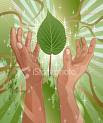
They’re many simple ways to go green without spending a lot of money in the slow economy. You can lower the impact of consumption with a few helpful tips that will help save the environment and also save money on your energy bill.

• Switch to compact fluorescent light bulbs
Compact fluorescent light bulbs can be a huge
energy saver by replacing all of your incandes-
cent bulbs with fluorescents and save on reductions in
heat production, energy use and your electric bills.

• Program your thermostat
When you are at home, keep the thermostat at 78˚F or
higher in the summer and 62˚F or lower in the winter.
Programmable thermostats allow you to program the
systems to reduce output when they are not needed.
• Plug air leaks
This simple step can go a long way toward keep-
ing your home at the temperature you desire, saving
money on heating and air conditioning bills.
• Tune up your heating and cooling system
Have a checkup for your HVAC system every 2 years
to make sure it is running efficiently. Be sure to clean
the filter monthly during times of peak usage; a dirty
filter can significantly reduce the efficiency of your
system.
• Switch to green power
Green Power is an optional utility service for custom-
ers who want to help expand the production and
distribution of renewable energy technologies. With
green power, you do not have to change your elec-
tricity provider. Instead, customers choose to pay a
premium on their electricity bill to cover the extra cost
of purchasing clean, sustainable energy. More info on
green power can be found at:
http://www.eere.energy.\gov/greenpower/markets/index.shtml.com
• Choose ENERGY STAR appliances
Energy Star products meet a high level
of energy efficiency, which can translate into savings
on electric bills. When considering the price of a new
appliance, take into account not only the purchase
price, but also the long-term savings associated with
an energy-efficient appliance.
• Reduce water use
• Indoor:
Use less water by adding aerators
to your sink faucets and changing to low-
flow showerheads
• Check leaky faucets
•Limit showers and take less baths
•Using dishwasher over hand wash
The dishwasher uses only half the energy, one-sixth of the water, and less soap. But there is a lot more to it than just faucet and sink and the appliance under your counter. Be aware of what hand washing habits you are using. How do you heat the water in your home? And how often do you do the dishes? How much water do you need to use doing the dishes? Do you fill the dishwater full and use only when needed?

• Outdoor:
Incorporate native plants in your land-
scape plan and minimize high-maintenance
landscaping such as rock, cement or turf grass to conserve water.
• Sprinkler system/ check for time controlled system
• Plant trees to provide shade and wind protection
for your house
This simple step can help you save money on heat-
ing and air conditioning bills while providing beautiful
views around your home.
• Use native plantings
Native plants have been growing and evolving in your
area for thousands of years and, as a result, have
adapted to the local soils and climate. As a result they
are more likely to thrive with minimal care, unlike
exotic plants. That can mean less need for water, fertilizer
and pesticides. Additional info on green landscaping
techniques can be found at
http://www.epa.gov/re-g3esd1/garden/.com
• Use nontoxic gardening techniques
Many gardeners over-apply or improperly apply
pesticides, putting themselves, their families, and pets
at increased health risk. Nearly half of all households
have pesticides stored within reach of children.
• Carpool, use public transportation, walk or bike
when possible
Green transportation means can greatly reduce
your energy expenditures and carbon
emissions from your daily routine
• Buy a high-efficiency car
The U.S. Department of Energy’s list offers the most fuel
efficient cars at http://www.fueleconomy.gov/feg/best-
worst.shtml
• Use reusable trash bags
• Reusable and recyclable shopping bags for grocery shopping
• Rethink your refrigriater
Buy an Energy Star fridge and you're likely to be dealing with numbers that are roughly half the energy used in older versions depending on size desired. Old fridges are really inefficient compared to their new contemporaries and you don't have to work that hard to cut back the amount a new fridge uses.
• Unplug appliances when not in use
• Line dry laundry















































